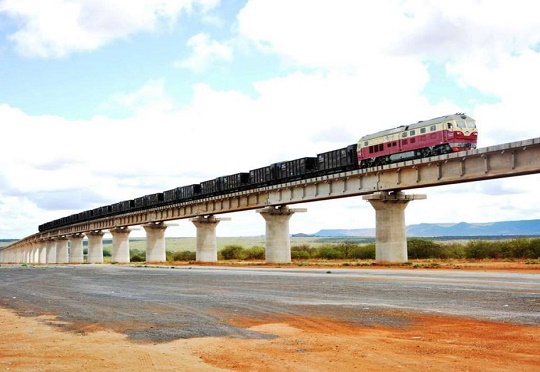Kenyan economy is predicted to grow at 6.5 per cent in 2017 from an estimated 5.9 per cent last year driven largely by a historic spike in borrowing this year driven by government and private sector as the capping works itself out according to the latest forecast by Metropol Corporation.
Metropol approached GDP forecasting from the gross fixed capital formation side. Capital formation is the investment in fixed assets of the country taken as a collective. For growth to happen there must be additional capacity created through accumulation of capital. This additional capacity is funded through savings and borrowings.
With accelerated infrastructure project implementation and completion of SGR phase 1, and the start of SGR phase II (Nairobi-Malaba), and the World Bank funded low seal 10,000KM roads program, the overall view is that an enhanced growth rate of 6-6.5% will be achieved in 2017.
On the other hand, the Banking Amendment Act 2016, signed into law in September 2016 introduced interest rate caps at 4 per cent over Central Bank Rate (CBR) for lending, and 70 per cent of CBR for deposit rates. This capping will work itself out over 2017 with increased public and private sector borrowing to historical levels of 15-20 per cent per year from current depressed level of 4 per cent.
7 Tier 1 banks have excess liquidity of approximately KShs 400 billion which is about 15 per cent of consolidated bank credit of 2.8 trillion, and can be expected to search for increased lending opportunities. In 2016/7, Kshs 100 billion will end up in government securities, while lending to private sector could increase by 50 billion on the back of increased mobile advances. This will rise to 80 billion during the first half of 2017/8, and 120 billion in the second half.
FDI inflows have been growing strongly since 2010 . With an average inflow of $1.5 billion over 2014/2016, this is driven by the hub characteristics of Nairobi, operations of a fully liberalized economy, good weather, a positive investment climate and developments in the oil and gas sector.
Evidence of these higher flows is to be found in the locating of Africa headquarters by many major multinationals in Nairobi, the entry into the market of North American food chains, increased presence of private equity and venture capital in Nairobi, and robust activity in the oil and gas, real estate and ICT sectors. The Overseas Private Investment Corporation (OPIC) of USA has recently opened its 3rd African office in Nairobi (after Lagos and Johannesburg).
The country’s current account deficit has continued to narrow through 2016. This is largely on the continued low oil prices, and increased positive balance of trade in EAC and COMESA. This is expected to continue over 2017. There is evidence of recovery of prices of soft commodities particularly cocoa, tea, coffee and soybeans. Coffee and tea should contribute to further deficit reduction.
In the 2017/2018 period, Metropol predicts a nominal growth of between 6 and 6.5 per cent driven by last mile connections, expected to reach 100% by 2020, generation power projects, 10,000kms low seal roads, SGR phase 1b, crude oil pipeline, early oil and ICT.
The Nairobi-Malaba-Kampala section of the SGR will be signed and launched in the 1st half of 2017 to allow Uganda to start its SGR implementation program. This will further climb to 7 to 8 per cent in 2018/2019 financial year driven by last mile connections, expected to reach 100% by 2020, generation power projects, 10,000kms roads, SGR Phase II, crude oil pipeline, early oil, Galana/Kalalu food security, 10 irrigation water dams and ICT.



